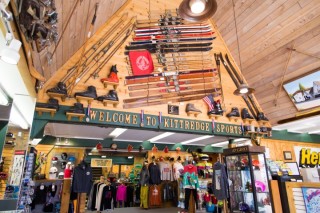
MORE POSTS LIKE THIS

Activities
E‑Bike Etiquette. It’s a Mammoth Thing.
At 8,000 feet, Mammoth Lakes can take your breath away. If you find yourself biking around town and feel like you would love a little extra oomph in your pedal, consider bringing along your e-bike or renting one from one of the many bike shops in town.
Learn More

Activities
How to Leave No Trace When Recreating Near Water
Mammoth Lakes is home to many beautiful streams, rivers and lakes – it’s in the name!
Learn More

Activities
Bucket List Guide to Mountain Biking in Mammoth Lakes
With endless mountain roads and more than 80-miles of single track on Mammoth Mountain, the region is home to some of the best mountain biking in the country.
Learn More



